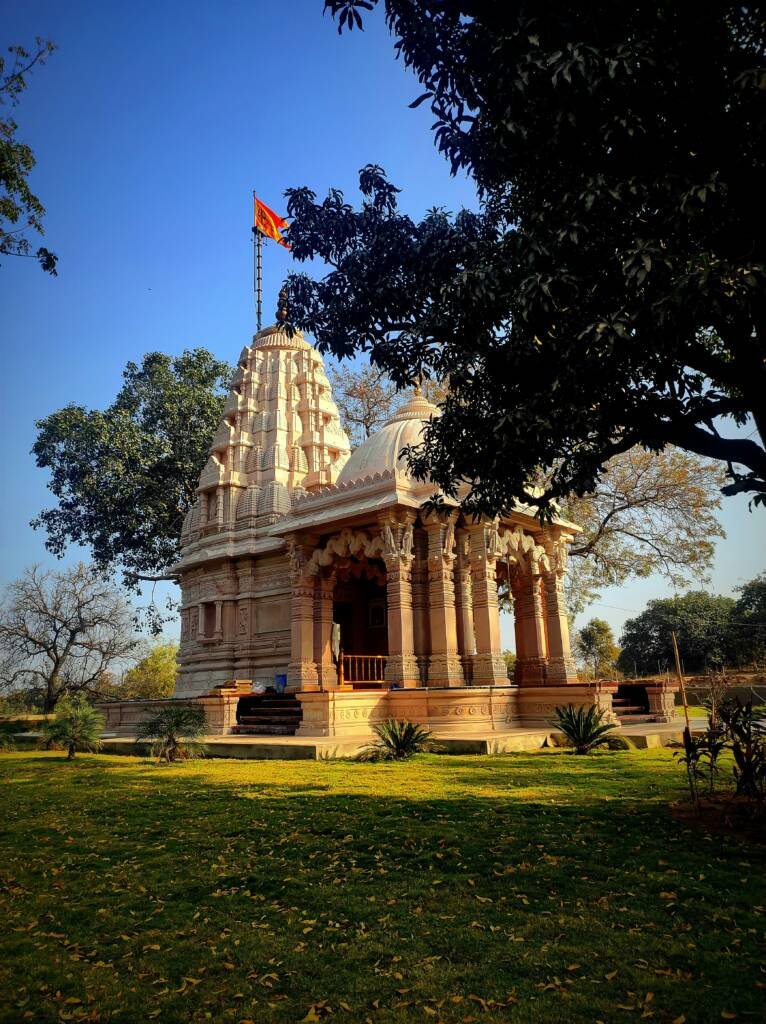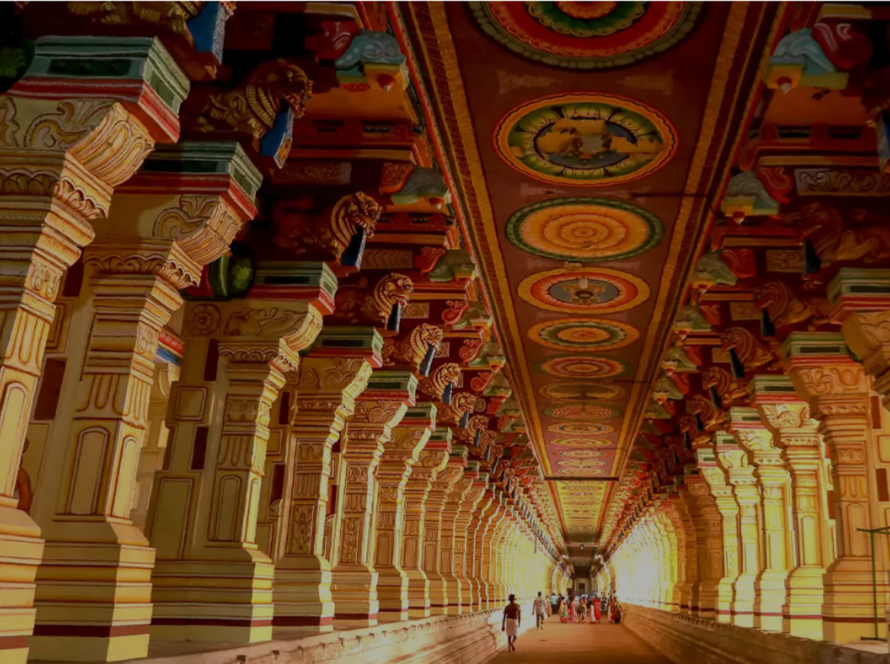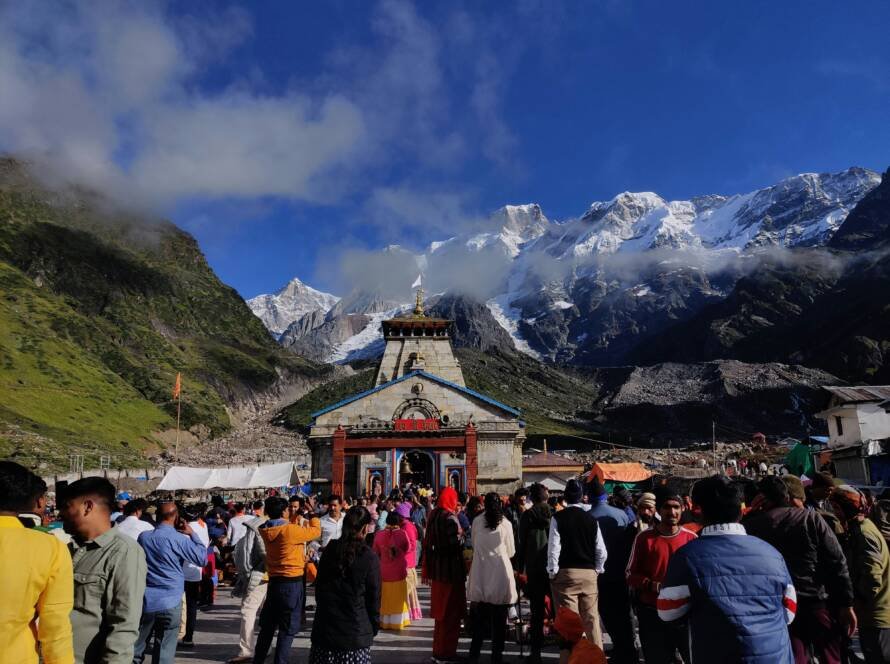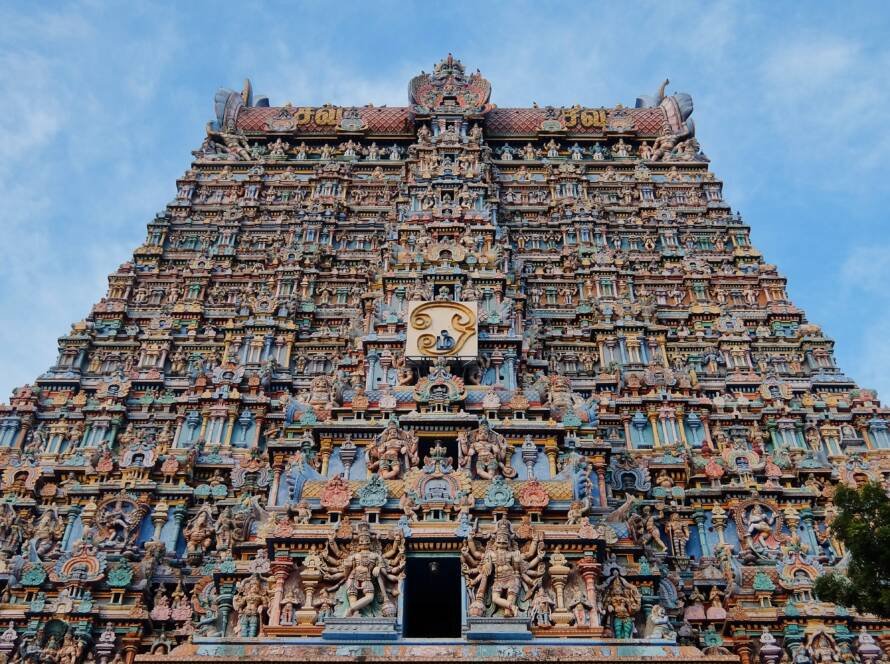Where stone meets soul, and nature breathes with prayer
In the quietude of a village dawn, as the first rays of sunlight touch the dew-kissed earth, a gentle bell tolls from the temple tower. Birds take flight. The tulsi leaves glisten. A soft chant rises in rhythm with the morning breeze. Here, beneath the sacred banyan or amidst the groves of neem, begins the story of India’s temples—not just as abodes of the divine, but as ancient custodians of ecological wisdom.
Temples in India have never been just places of worship. They are living ecosystems—where the spiritual, the natural, and the communal merge into one sacred rhythm. In the lap of these marvels lies a centuries-old philosophy: that divinity and nature are not separate. One nurtures the other.
Stone, Soil, and Soul: The Eco-Spiritual Architecture of Temples
The very location of temples followed natural principles—built near rivers, forests, hilltops, or amidst fertile land. This wasn’t by accident. It was by design.
Temple architecture followed the principles of Vastu Shastra, which aligned structures with the five elements—earth (prithvi), water (jal), fire (agni), air (vayu), and space (akash). The garbhagriha, or sanctum sanctorum, was often constructed over spots with high geomagnetic and energetic significance. Devotees sitting in meditation here were believed to absorb subtle energies—aligning body, mind, and spirit.
Even the materials used—granite, laterite, terracotta—were locally sourced, making construction both sustainable and harmonized with the land. Temple tanks or pushkarinis stored rainwater and replenished groundwater. Groves surrounding the temples were preserved as sacred forests, home to birds, bees, and beasts, symbolizing the seamless unity of all life.

Sacred Groves and Living Shrines: Nature as Deity
India’s ancient traditions never saw nature as an external object to be conquered. Trees were venerated as living deities, rivers as mothers, animals as companions of gods. In temple complexes, this reverence became a lived reality.
Every tree planted around a temple had purpose and symbolism—banyan for longevity, peepal for wisdom, neem for healing. The Nandavana (temple garden) grew herbs for Ayurvedic remedies and flowers for ritual use. Birds nested in peace, cows roamed freely, and even ants were offered grains. The temple was not an isolated monument—it was a sanctuary for life in all its forms.
Through practices like abhisheka, using milk, ghee, honey, and herbs, ancient temple rituals mirrored the natural cycles of purification, offering, and regeneration. Devotees were thus unconsciously participating in an ecological ritual—where every prayer watered a plant, every offering fed another life.
Festivals of the Earth: Rhythms of Season and Spirit
Temples followed a calendar not just of deities, but of nature’s rhythms. Festivals celebrated the blooming of flowers, the onset of monsoons, harvests, solstices, and equinoxes.
Take Pongal in Tamil Nadu or Makar Sankranti in the north—temple rituals during these times honour not just gods but the sun, the soil, the cattle, and the crops. Rath Yatras and processions were not merely spectacle—they brought the deity outdoors, allowing blessings to fall on the streets, the fields, the people, and the flora alike.
Even silence was sacred. On days of amavasya, people fasted and temples dimmed, aligning with the earth’s quieter energies. These were ancient ecological blueprints wrapped in faith and festivity.
Why It Matters Today: Reclaiming Sacred Ecology
In today’s world of dwindling green spaces and noisy disconnection, India’s temple heritage offers not just nostalgia, but a way forward. It reminds us that nature is not a resource—it is a relative. Temples show us that we do not pray in nature—we pray with nature.
Reviving sacred groves, restoring temple tanks, replanting nandavanas, and reintegrating rituals with seasonal awareness are no longer acts of devotion alone—they are acts of survival, of reawakening our place in the web of life.
A Sacred Pause: Coming Home to the Temple Within
As the evening lamp flickers in the temple courtyard and the conch echoes across the dusk-lit sky, one feels a quiet anchoring. Amidst ancient stone and soft breeze, something shifts—a remembering.
India’s temples are more than heritage—they are heartbeat. They are reminders that harmony is not a utopia; it is a practice. A rhythm. A prayer.
And perhaps, as we walk barefoot on the cool stone floor, beneath the canopy of stars, we might just remember that we, too, are temples—made of earth and soul, longing to live in sacred balance with all that breathes.
Let us preserve the sanctity of our temples not just with rituals, but with reverence for all life that surrounds them. For in doing so, we preserve the earth itself.



